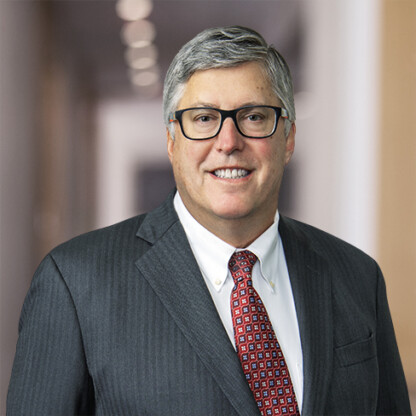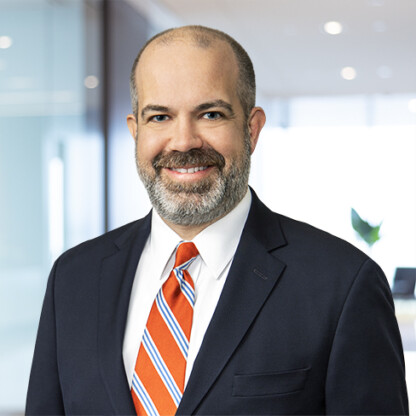
“Mobility Disruption” was one of the main pillars at this year’s Detroit Regional Chamber of Commerce’s Mackinac Policy Conference, that attracted 1,700 business and political leaders. A common theme of “The Mobility State: Perspectives on Policy and Regulation” panel discussion last week was that there is a huge gap between connected and autonomous driving technology and its regulation – a gap that needs to be closed in a flexible way – but seeking a perfect, zero-defect outcome is both unrealistic and counterproductive.
The panelists included moderator John McElroy, the Host of “Autoline”; U.S. Senator Gary Peters from Michigan; Pavan Agarwal, an Intellectual Property partner in Foley & Lardner’s Washington, D.C. office; Carla Bailo, President and CEO of the Center for Automotive Research in Ann Arbor; and David Sampson, President and CEO of the Property Casualty Insurers Association of America.
Senator Peters began with an update on the status of the AV Start Act, of which he is a co-sponsor. The Act was passed unanimously out of Senate committee but has yet to reach the Senate floor. (The House version of similar legislation, the SELF Drive Act, was passed unanimously but those having issues with the legislation became engaged on the Senate side according to Mr. Peters.) Senator Peters is hopeful that a “vehicle bill” (no pun intended) can be found to move the AV Start Act forward, hopefully this year.
Pavan Agarwal focused on the role of the automotive industry in Michigan in driving mobility technology forward, through “embraced collaborations” with technology companies. He noted that this is especially true in areas such as Artificial Intelligence where the automotive companies did not possess as much domain knowledge as in other areas of vehicle development and manufacturing. He further noted that the law and regulation takes time to catch up with technology, and a flexible regulatory environment mentioned by Senator Peters can provide companies with sufficient space and therefore confidence to invest the substantial time and money required to develop autonomous mobility solutions.
Mr. Sampson echoed those comments, noting that “regulatory triage” is needed now and not regulatory perfection, as the insurance industry addresses the challenges of developing programs for insuring connected and autonomous driving. He noted the “mismatch” between regulation and innovation that currently exists, that is hampering the development of effective insurance structures. When asked about a “self-insurance” model for the OEMs, he noted that some OEMs are examining that approach but queried whether it was realistic to build the cost of self-insurance into vehicle pricing up front (vs. after the fact payment, under the current regime). Senator Peters agreed with the need for flexibility, while meeting certain minimum safety standards, mandatory reporting, clear disclosure of what a vehicle can and cannot do, and cybersecurity and data collection controls that will enhance consumer confidence in the safety, adoption and use of the technology. But he added that we “cannot have zero tolerance,” especially when you consider the day-to-day “carnage” and number of traffic fatalities in the current world of human error and distracted driving.
Ms. Bailo, who worked for many years at a leading automotive OEM, noted that despite rigorous testing, it is impossible to test for all scenarios and the impacts of human errors, interventions and distractions. Seeking perfection in performance in all cases is unattainable, but there must be a strong baseline of testing and safety that is achieved. She noted that the mobility industry might effectively learn from the aviation industry, which has been using elements of automated piloting for some time. Mr. Agarwal supported Ms. Bailo’s observation, adding that even short of perfection, when fully developed and adopted the technology “will be way safer and the way to get around so much better” than the current world of distraction and high fatality rates, especially in teen drivers.
Mr. McElroy asked: “Will Michigan be a continuing leader in connected and autonomous driving technology?” The panel consensus was YES, but not by itself but rather by working in collaboration with many other centers of excellence in the United States and worldwide. Mr. Agarwal noted that it is difficult to replace the OEMs’ longstanding ability to design, test, manufacture, and distribute their products in a safe way, based on decades of experience. He noted that for autonomous vehicle manufacturing, Michigan may remain the “quarterback” but “not the entire team.”
All in all, the panel consensus was that mobility policy and regulation has a lot of catching up to do with mobility technology. The need to close this gap, in a flexible way that promotes investment and certainty, is paramount. Key to closing the gap and making that journey is the realization that no technology will be perfect, and shedding the artifice of zero-defect perfection will go a long way toward creating a much safer future state of mobility in the United States and rest of world.

